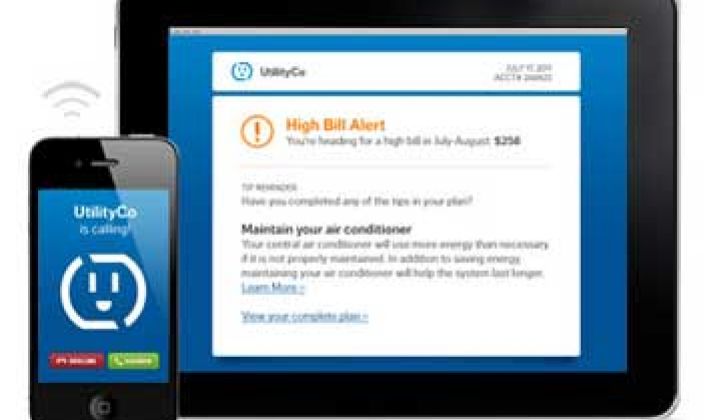Opower, one of the leading startups in home energy management services for utilities, announced additional business from seven existing utility customers and four new customers, including its first in Canada.
The software company, best known for its reports that let users compare their and their neighbors’ energy use and provide energy efficiency tips, has signed up an additional 5 million residential customers through the 11 utilities, bringing its total to about 15 million homes under contract across 75 utilities.
The numbers aren’t so different from a similar announcement two months ago, when the company first mentioned its contract with FirstEnergy Maryland and FirstEnergy Pennsylvania.
New customers include Nova Scotia Power and Efficiency Nova Scotia, which has 90,000 homes that will receive Opower’s home energy reports and have access to its web portal. The contract is the Arlington, Va-based company’s second outside of the U.S. and first in Canada. Opower also signed PECO, bringing the entire Exelon family under its belt.
“This is moving from a ‘nice-to-have’ feature to a ‘must-have,’” said Arkadi Gerney, senior director for Policy, Partnerships, and Public Affairs at Opower.
When Opower launched about five years ago, its appeal for utilities was the ability to shave a few percentage points in energy use off of large amounts of home using a relatively inexpensive, low-touch solution.
Now, offering consumers access to their smart grid data, or just thinking about new ways to engage customers is a must, not a nice add-on.
Ameren and Commonwealth Edison, for example, are both tasked by the Illinois legislature to prove the value of their smart grid investments, if Ameren can even get approval in the first place. ComEd is now one of Opower’s largest customers.
Other utilities that are expanding their program with Opower have suffered the loss of customer trust after extended outages in the past year. In general, “utilities have become increasingly sensitive to the need to provide high-quality services in between times of crisis,” said Gerney.
The contract expansions include a mix of adding more customers to the home reports, to web portal access, or both, according to Gerney. New business made up about 3 million of the 5 million new homes.
Industry efforts like the GreenButton are also catalyzing a conversation about energy information, said Gerney, and making it easier for third parties like Opower to have access to it.
Competitors include Boulder, Colo.-based Tendril, which has more than 30 utility pilot customers (and a few full-scale rollouts coming this year), and Aclara, whose customer web portal now runs at about 20 utilities across the U.S. Canadian startup Energate partners with Silver Spring Networks and is also reaching millions of homes in Ontario province. Efficiency 2.0, a startup with software to get homeowners to save energy via coupon giveaways and contests, was bought by C3 earlier this month.
While the appeal of software-based platforms such as Efficiency 2.0 and Opower continue to gain ground, certain utilities have also started to dig deeper into the world of hardware, primarily in the domain of connected thermostats. Two Texas retailers, Reliant and TXU Energy, are both offering different smart thermostat programs, and Oklahoma Gas & Electric is deploying 150,000 thermostats to homes in the next few years to delay generation through demand response programs.
EnergyHub, which is the platform that 3M thermostats come with, has seen business grow tenfold since partnering with Radio Thermostat of America, which makes the Filtrate 3M thermostat. Opower has also moved into hardware; in 2011, it announced a partnership with Honeywell and is testing its cloud platform in about 1,000 homes.
Hardware paired with the right analytics can reap far more savings than just web portal access and simple energy reports, but Opower’s continued success illustrates that utilities are still willing and/or able to pay for the increased savings. Many utilities are still at step one of the customer engagement process. “One of the biggest drivers is the deployment of smart meters and the goal to communicate back to their customers,” said Gerney. “Simply keeping the lights on is not enough; customers increasingly expect a higher level of service.”



